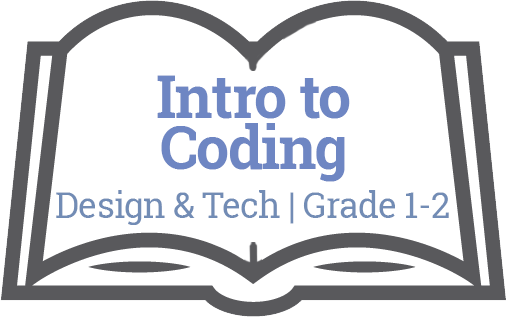
Unit Plan: I Can Code!
Introduction to Coding
Applied Design, Skills & Technology / Grade 1-2

Big Ideas
Skills can be developed through play.
Technologies are tools that extend human capabilities.
Concepts:
- Systems
- Cause/effect
Essential Questions
Students will keep considering…
- How can I express myself to achieve a goal?
Evaluative Criteria
N/A
Monitoring Progress
Formative Assessment
- Code.org progression through levels
- Teacher monitoring: partner work, group work, class work (successfully competing tasks, using appropriate vocab, etc.)
Summative Assessment
- See performance task
Resources
Websites
Other
- Paul Clarke and Justine Frazee – District Helping Teahcers for Technology
Reflection
How will teachers reflect on and evaluate the completed project?
What aspects of the unit went well?
What did students struggle with?
What did you struggle with?
What would you add/revise the next time you taught this unit?
Were there any unintended outcomes?
Were students engaged?
Downloads
Stage 1 – Desired Results
Big Ideas
Skills can be developed through play.
Technologies are tools that extend human capabilities.
Concepts:
- Systems
- Cause/effect
Transfer Goals
Students will be able to independently use their learning to…
- I can use my words or actions to give directions and accomplish tasks.
Meaning
Students will understand that…
- I can use my words to ask others to do tasks.
- Left and right are ways of distinguishing direction.
- I can control the computer with the mouse and keyboard.
- Computers receive directions from users.
- The computer is a tool I can use to accomplish tasks.
- Coding is a sequence of tasks that a programmer gives a computer.
- I can use coding to create products or actions online.
Students will keep considering…
- How can I express myself to achieve a goal?
Acquisition
Students will be skilled at…
- Use materials, tools, and technologies in a safe manner in both physical and digital environments
- Develop their skills and add new ones through play and collaborative work
- Explore the use of simple, available tools and technologies to extend their capabilities
- Students are expected to use the learning standards for Curricular Competencies from Applied Design, Skills, and Technologies K-3 in combination with grade-level content from other areas of learning in cross-curricular activities to develop foundational mindsets and skills in design thinking and making.
Which Core Competencies will be integrated into the unit?
- I get ideas when I play.
- I make my ideas work or I change what I am doing.
- With some support, I can be part of a group
- I am kind to others, can work or play co-operatively, and can build relationships with people of my choosing
- I can work with others to achieve a common goal; I do my share
- I can explore materials and actions
- I can show a sense of accomplishment and joy
First People's Principles of Learning

The following resources are made available through the British Columbia Ministry of Education. For more information, please visit BC’s New Curriculum.
Big Ideas
The Big Ideas consist of generalizations and principles and the key concepts important in an area of learning. The Big Ideas represent what students will understand at the completion of the curriculum for their grade. They are intended to endure beyond a single grade and contribute to future understanding.
Core Competencies
 Communications Competency
Communications Competency
The set of abilities that students use to impart and exchange information, experiences and ideas, to explore the world around them, and to understand and effectively engage in the use of digital media
 Thinking Competency
Thinking Competency
The knowledge, skills and processes we associate with intellectual development
 Social Competency
Social Competency
The set of abilities that relate to students’ identity in the world, both as individuals and as members of their community and society
Curricular Competencies & Content
Curricular Competencies are the skills, strategies, and processes that students develop over time. They reflect the “Do” in the Know-Do-Understand model of curriculum. The Curricular Competencies are built on the thinking, communicating, and personal and social competencies relevant to disciplines that make up an area of learning.
Additional Resources
First People's Principles of Learning
To read more about First People’s Principles of Learning, please click here.
For classroom resources, please visit the First Nations Education Steering Committee.
